Abstract
The relationship between two variables may be mathematically coupled if either one or both variables are derived and/or calculated, and this can lead to erroneous results and invalid conclusions. The purpose of this report is to identify four types of mathematic coupling of data. Type 1 coupling involves directional changes in two variables which are mathematically coupled. Type 2 coupling is the functional relationship between two calculated variables which have one or more common component variables. Type 3, the most common type of mathematic coupling, is direct algebraic coupling between two variables, when one or more of the variables is derived and/or calculated. Type 4 is indirect coupling or physiologic coupling. The common problem in each type of mathematic coupling is that one variable either directly or indirectly contains the whole or components of the second variable. Statistical techniques, when properly applied to the relationship between the two variables, further obscure the underlying mathematic coupling, and tend to support the erroneous results. Recognition of mathematic coupling is imperative for correct data analysis and accurate interpretation.
Full text
PDF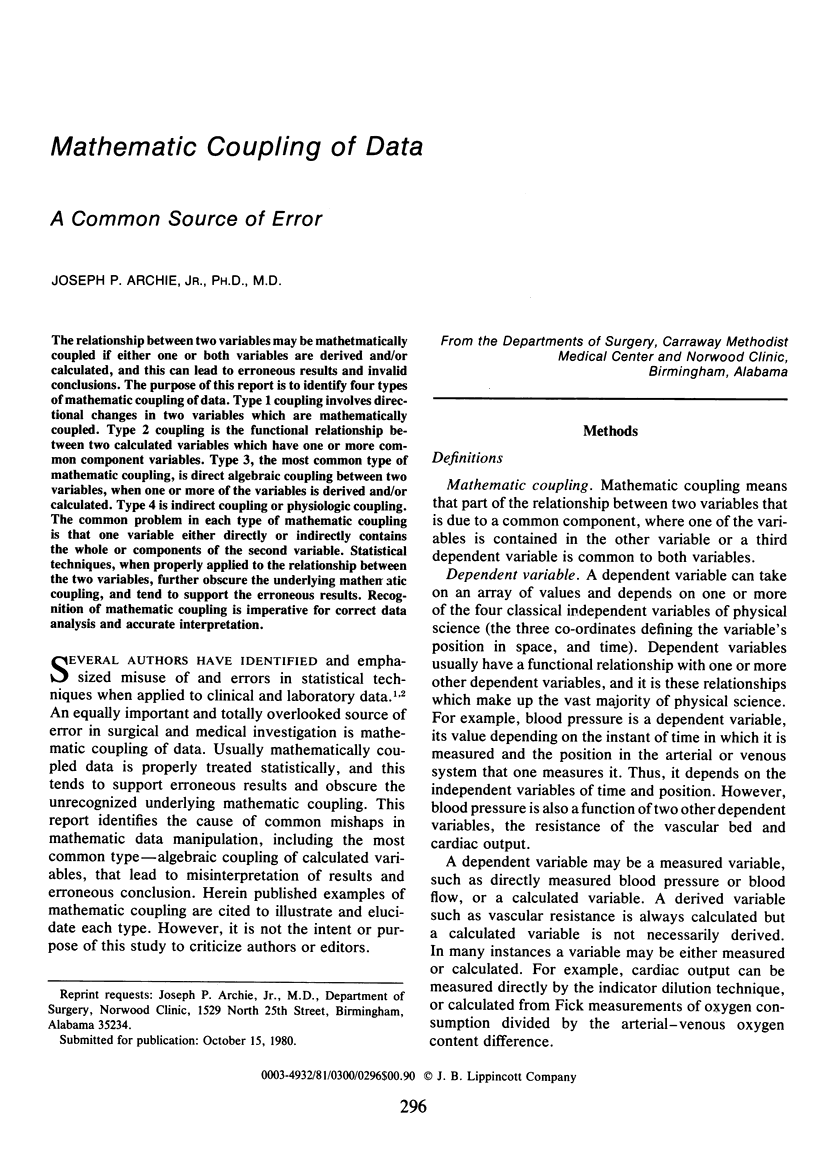
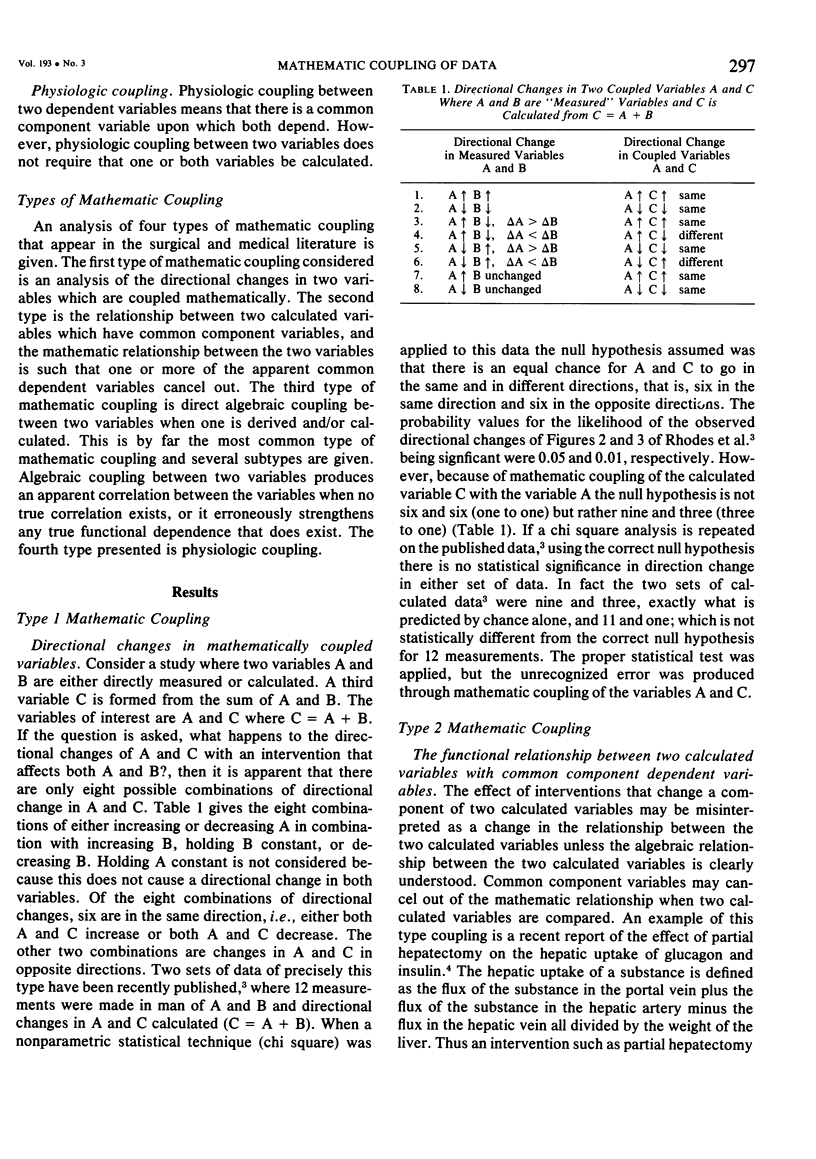
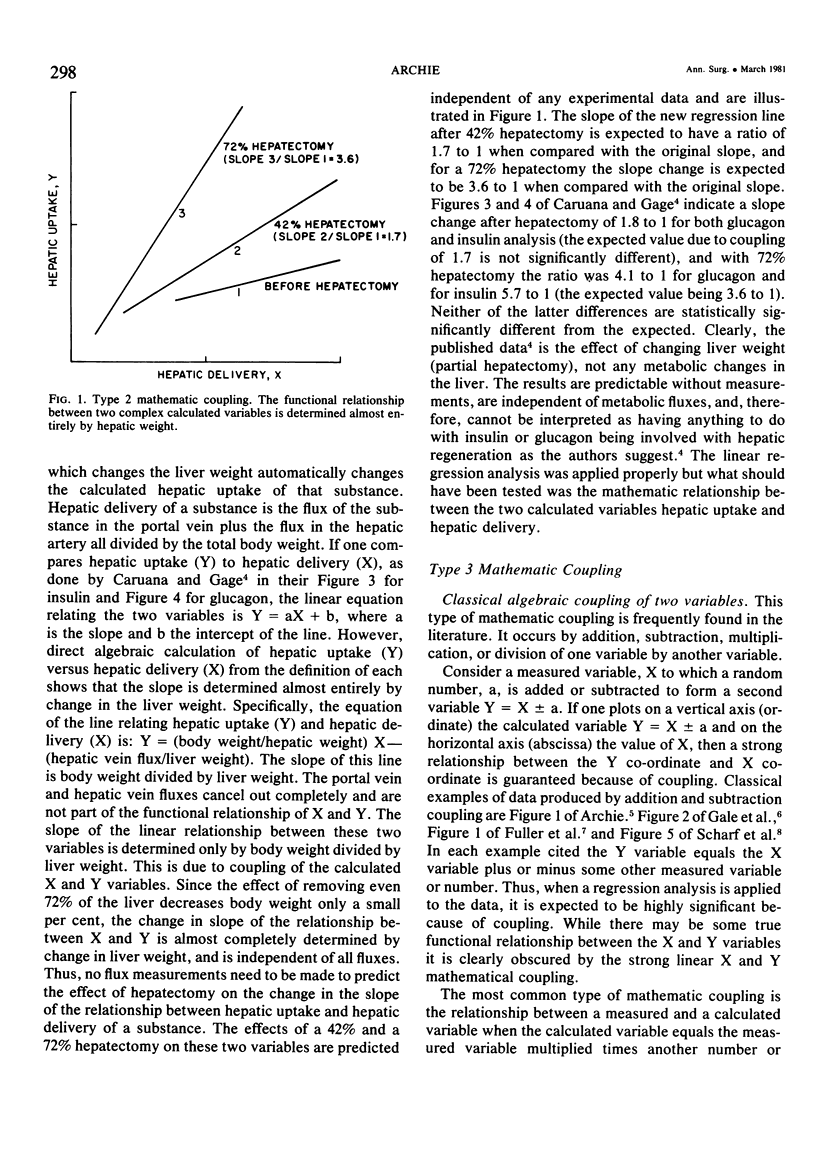
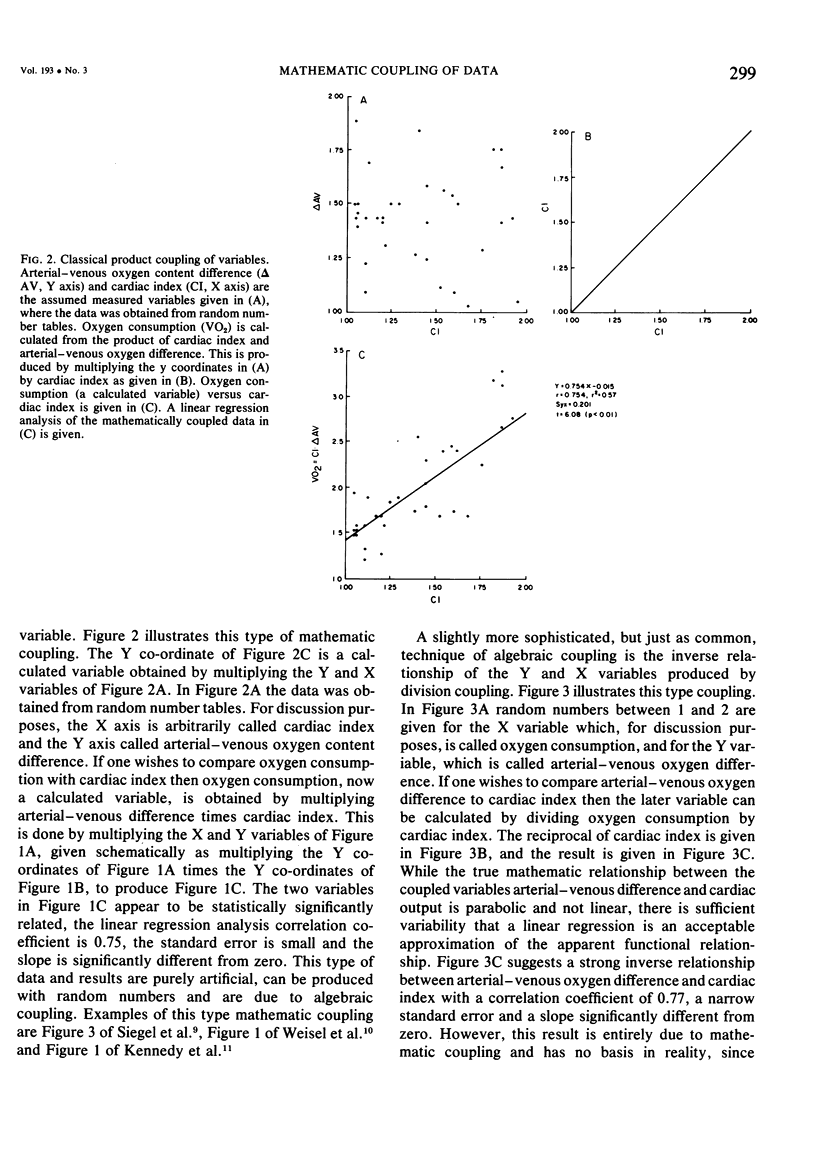

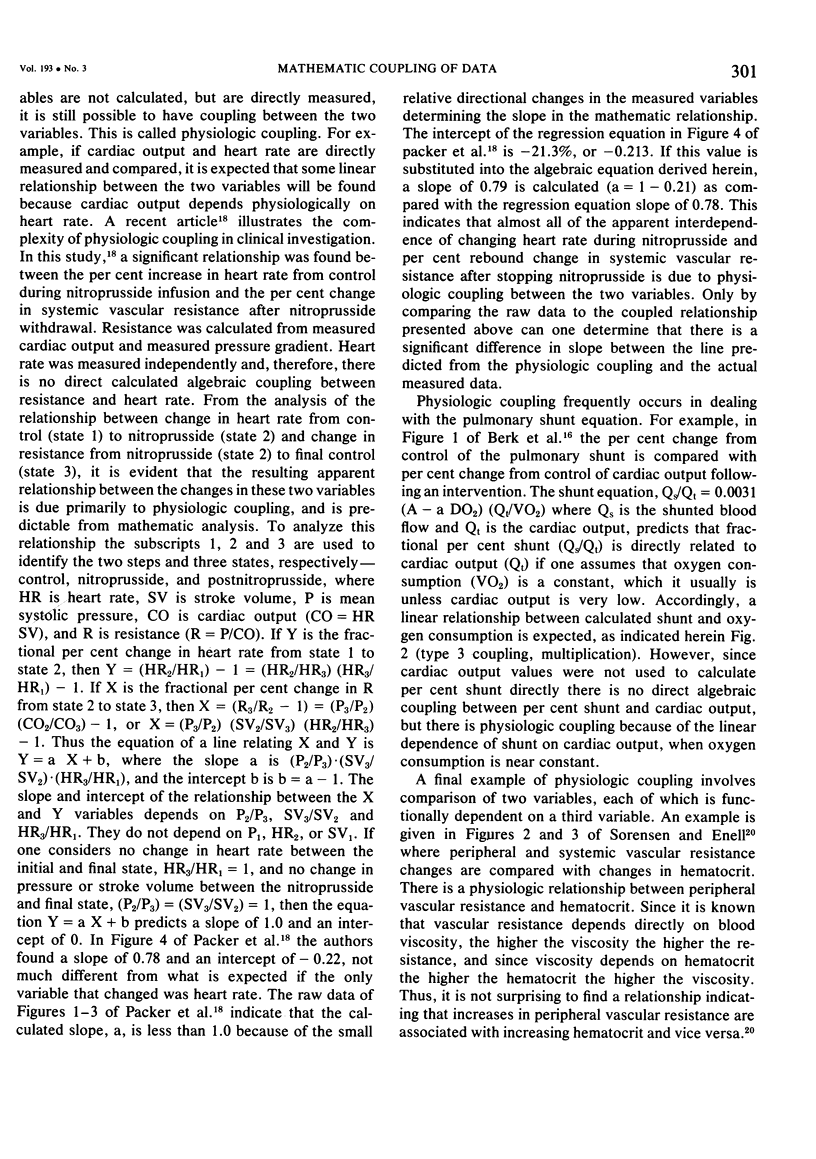

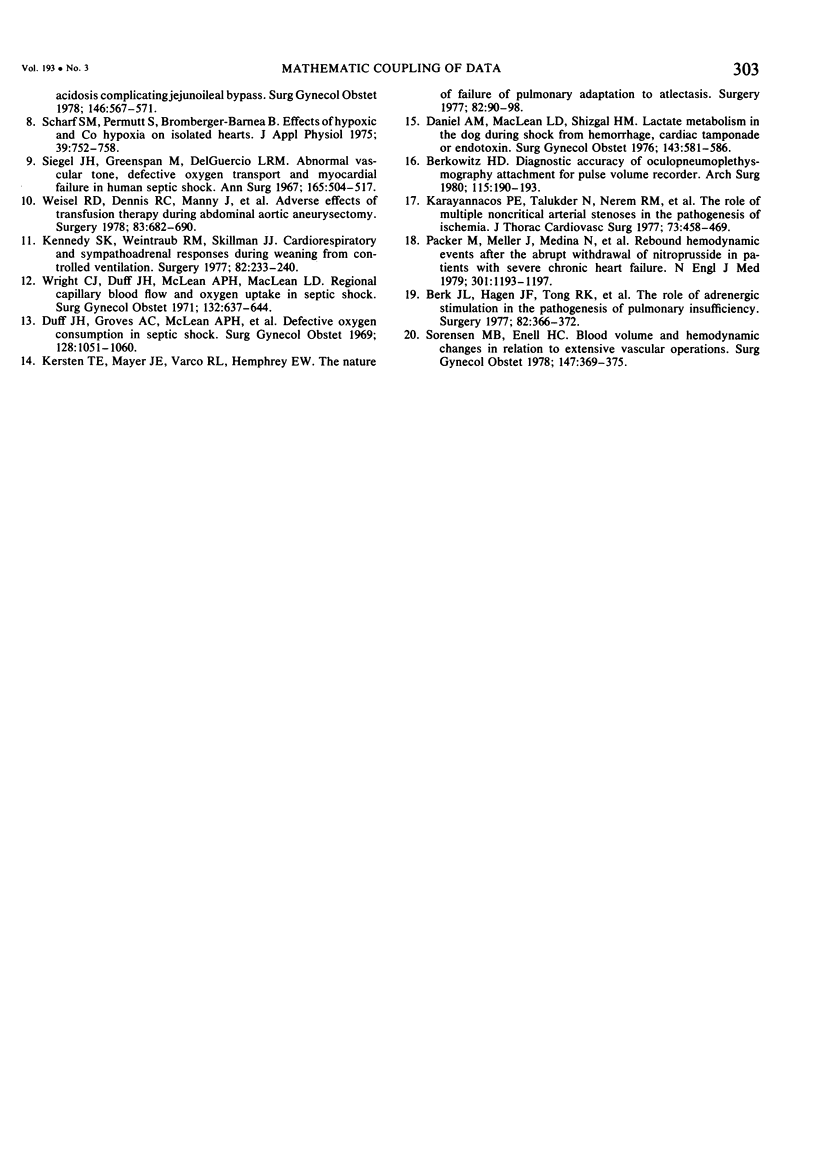
Selected References
These references are in PubMed. This may not be the complete list of references from this article.
- Archie J. P., Jr Jugular venous pressure and carotid and jugular back pressure in patients undergoing carotid endarterectomy. Surg Forum. 1977;28:210–212. [PubMed] [Google Scholar]
- Berk J. L., Hagen J. F., Tong R. K., Levy M. L., Martin P. J. The role of adrenergic stimulation in the pathogenesis of pulmonary insufficiency. Surgery. 1977 Sep;82(3):366–372. [PubMed] [Google Scholar]
- Berkowitz H. D. Diagnostic accuracy of ocular pneumoplethysmography attachment for pulse volume recorder. Arch Surg. 1980 Feb;115(2):190–193. doi: 10.1001/archsurg.1980.01380020056013. [DOI] [PubMed] [Google Scholar]
- Caruana J. A., Jr, Gage A. A. Increased uptake of insulin and glucagon by the liver as a signal for regeneration. Surg Gynecol Obstet. 1980 Mar;150(3):390–394. [PubMed] [Google Scholar]
- Daniel A. M., Pierce C. H., MacLean L. D., Shizgal H. M. Lactate metabolism in the dog during shock from hemorrhage, cardiac tamponade or endotoxin. Surg Gynecol Obstet. 1976 Oct;143(4):581–586. [PubMed] [Google Scholar]
- Duff J. H., Groves A. C., McLean A. P., LaPointe R., MacLean L. D. Defective oxygen consumption in septic shock. Surg Gynecol Obstet. 1969 May;128(5):1051–1060. [PubMed] [Google Scholar]
- Fuller T. J., Garg L. C., Harty R. F., Cerda J. J., O'Leary J. P. Severe hyperchloremic acidosis complicating jejunoileal bypass. Surg Gynecol Obstet. 1978 Apr;146(4):567–571. [PubMed] [Google Scholar]
- Gale A. W., Arciniegas E., Green E. W., Blackstone E. H., Kirklin J. W. Growth of the pulmonary anulus and pulmonary arteries after the Blalock-Taussig shunt. J Thorac Cardiovasc Surg. 1979 Mar;77(3):459–465. [PubMed] [Google Scholar]
- Gore S. M., Jones I. G., Rytter E. C. Misuse of statistical methods: critical assessment of articles in BMJ from January to March 1976. Br Med J. 1977 Jan 8;1(6053):85–87. doi: 10.1136/bmj.1.6053.85. [DOI] [PMC free article] [PubMed] [Google Scholar]
- Karayannacos P. E., Talukder N., Nerem R. M., Roshon S., Vasko J. S. The role of multiple noncritical arterial stenoses in the pathogenesis of ischemia. J Thorac Cardiovasc Surg. 1977 Mar;73(3):458–469. [PubMed] [Google Scholar]
- Kennedy S. K., Weintraub R. M., Skillman J. J. Cardiorespiratory and sympathoadrenal responses during weaning from controlled ventilation. Surgery. 1977 Aug;82(2):233–240. [PubMed] [Google Scholar]
- Kersten T. E., Mayer J. E., Varco R. L., Humphrey E. W. The nature of failure of pulmonary adaptation to atelectasis. Surgery. 1977 Jul;82(1):90–98. [PubMed] [Google Scholar]
- Packer M., Meller J., Medina N., Gorlin R., Herman M. V. Rebound hemodynamic events after the abrupt withdrawal of nitroprusside in patients with severe chronic heart failure. N Engl J Med. 1979 Nov 29;301(22):1193–1197. doi: 10.1056/NEJM197911293012201. [DOI] [PubMed] [Google Scholar]
- Rhodes G. R., Newell J. C., Shah D., Scovill W., Tauber J., Dutton R. E., Powers S. R. Increased oxygen consumption accompanying increased oxygen delivery with hypertonic mannitol in adult respiratory distress syndrome. Surgery. 1978 Oct;84(4):490–497. [PubMed] [Google Scholar]
- Scharf S. M., Permutt S., Bromberger-Barnea B. Effects of hypoxic and CO hypoxia on isolated hearts. J Appl Physiol. 1975 Nov;39(5):752–758. doi: 10.1152/jappl.1975.39.5.752. [DOI] [PubMed] [Google Scholar]
- Siegel J. H., Greenspan M., Del Guercio L. R. Abnormal vascular tone, defective oxygen transport and myocardial failure in human septic shock. Ann Surg. 1967 Apr;165(4):504–517. doi: 10.1097/00000658-196704000-00002. [DOI] [PMC free article] [PubMed] [Google Scholar]
- Sørensen M. B., Engell H. C. Blood volume and hemodynamic changes in relation to extensive vascular operations. Surg Gynecol Obstet. 1978 Sep;147(3):369–375. [PubMed] [Google Scholar]
- Weisel R. D., Dennis R. C., Manny J., Mannick J. A., Valeri C. R., Hechtman H. B. Adverse effects of transfusion therapy during abdominal aortic aneurysectomy. Surgery. 1978 Jun;83(6):682–690. [PubMed] [Google Scholar]
- Wright C. J., Duff J. H., McLean A. P., MacLean L. D. Regional capillary blood flow and oxygen uptake in severe sepsis. Surg Gynecol Obstet. 1971 Apr;132(4):637–644. [PubMed] [Google Scholar]


